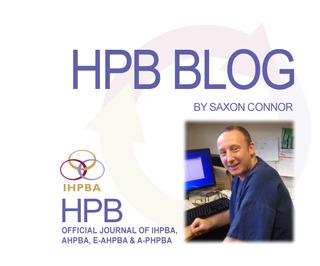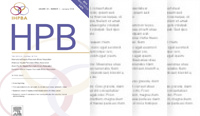International Hepato-Pancreato-Biliary Association
HPB Blog, April 2018

The April issue of HPB is a mix of articles focusing on technical factors, outcomes from large registries and basic science.
Starting with the technical tips, Valente et al describe the approach used at Mondor Hospital to safely perform laparoscopic left hepatectomy. Given the pioneering history and expertise in the field of laparoscopic liver surgery of this institution and it authors there would be few who will not gain significantly from investing time reading this article in full. Zimmermann and colleagues provide a comparison of outcomes by open, laparoscopic and robotic pancreatoduodectomy and although the outcomes are impressive it should also be read in conjunction with the article by Beane et al. It provides a thought provoking analysis of the outcomes of patients who undergo conversion from minimally invasive pancreatic resection. The results clearly have implications for surgeons performing pancreatic MIS with regard to patient selection, informed consent and intraoperative decision making. Again a must read for those in this field.
Authors from Amsterdam provide us with two systematic reviews looking at the effect of tumour manipulation during pancreatic resection on the presence of tumour cells within the peritoneal cavity and the ideal tumour marker to identify recurrent pancreatic cancer. Unfortunately both suffer from a lack of high quality data but raise several interesting questions for further study.
Registry data from South Australia now confirms what many liver surgeons have been observing, patients undergoing resection for colorectal liver metastases are surviving. In this study the median survival was 5 years, a remarkable change from when many of us began our practice.
Post-operative hepatic failure (PHLF) also gets mention with Sheng et al investigating potential ways to map liver regeneration following ALLPS while Yu et al highlight the importance of a persistently raised ALT in predicting early mortality in those who develop PHLF following resection for HCC on background of HBV.
On the biliary side there is a technical solution outlining how to “get out of jail” when faced with a frail patient presenting with cholecystitis and common duct stones, a nomogram to predict success with LCBDE and outcomes from a collection of western centres for patients who underwent vascular resection for hilar cancer. For those who plan to publish on the outcomes of bile duct injury there is a sentinel paper by Cho et al. The experts, provide a set of definitions and standards for reporting outcomes following treatment for bile duct injury, with the aim of improving the homogeneity of the published literature.
As I prepared this blog it was striking how many of these articles were coming from thought leaders and centres of excellence within the field of HPB surgery. Traditionally authors have sought to find journals with the highest impact factor for their research so why has HPB found such a niche? For most authors the hope is that their research is read, translated into clinical practice and thus make a difference to patient lives. For research to be translated into clinical practice it needs to be read by those who provide the clinical care. Hence HPB offers a chance to “narrowcast” directly to the clinical influencers rather than to broadcast to a general non influential audience. Impact factors might be an important academic metric but they won’t change patients’ lives.
Corporate Partners
If you are interested in becoming a Corporate Partner of the IHBPA please contact industry@ihpba.org
Find out more


